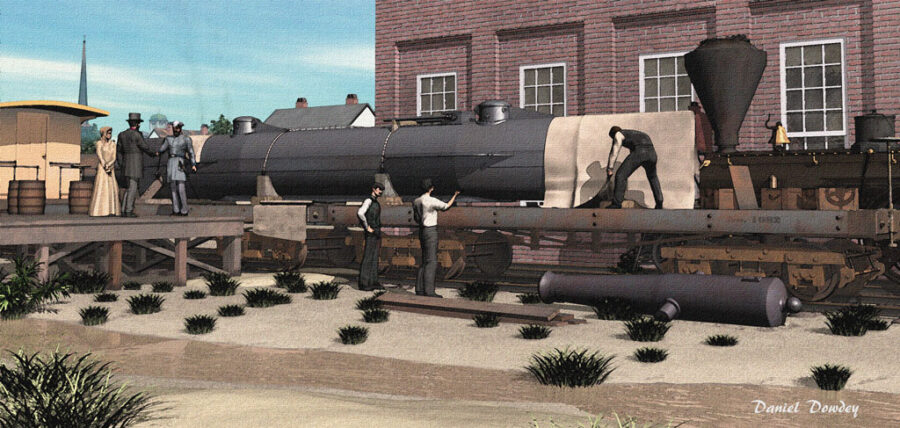One of the most common questions we get from readers is why we call the submarine the H. L. Hunley, and not the CSS Hunley.
Good question, and we have a good reason. It’s because the Hunley was never officially a Confederate States Ship.
The Hunley was built in Mobile, Alabama, in 1863 by a group of investors (led by Horace Lawson Hunley) who likely intended to use the experimental submarine as a privateer – a craft that would sink Union blockade ships for bounties offered by the Confederate government. Government officials had little choice but to use this approach. The Confederate States Navy was hopelessly overmatched at sea and needed all the help it could get. The government promised to pay private crews a handsome reward for any Union ship they could sink.
Shortly after the Hunley proved its effectiveness during a test demonstration in Mobile, it was sent by rail to Charleston. Confederate Army Gen. P.G.T. Beauregard had requested the submarine’s services to help break a viciously effective blockade off the South Carolina harbor.
By late August, Beauregard – frustrated with the Hunley crew’s reluctance to attack immediately – commandeered the submarine and raised a crew from various Confederate ships stationed in Charleston Harbor. And he quickly discovered why the Hunley’s private crew had been so cautious. Beauregard’s crew sank the Hunley at the dock on Aug. 29, 1863, an incident that resulted in the deaths of five sailors.
The General declared the sub a failure and turned it back over to Horace Hunley upon his arrival in Charleston. Horace raised his own crew, largely comprised of men from the Mobile machine shop that had built the sub. But they did no better.
On Oct. 15, 1863, the Hunley sank again with Horace Hunley and seven others onboard during a training exercise.
Because the Confederate government never officially bought or commissioned the submarine, the Hunley was, and forever remains, a private vessel. From there, George Dixon convinced Beauregard to give the Hunley one more chance with him serving as Captain. Dixon and his volunteer crew would ultimately make world history and sink the Union blockading ship. They executed their attack with Beauregard’s approval but the submarine itself remained a private vessel.
So, for Hunley history lovers who want to know what to correctly call their favorite submarine, her correct name is simply H. L. Hunley.



